Travels in Canada
In terms of land size, Canada is the biggest nation in North America and the second-largest in the entire world, behind Russia. From the Atlantic Ocean on its east to the Pacific Ocean on its west and the Arctic Ocean on its north, Canada’s 10 provinces and three territories reach. Its southern land boundary is shared with the United States of America. Canada’s three most significant metropolitan areas are Toronto, Montreal, and Vancouver. Ottawa is the nation’s capital.
Canada is renowned around the world for its vast, untamed, and undeveloped wilderness as well as its breathtaking landscapes, which include mountains, glacial lakes, fjords, floating icebergs, frozen vistas in the frigid north, and large expanses of grassland. The Canadian cities of Toronto, Montreal, Vancouver, and Calgary are among the top 20 most livable cities in the world, and Canada is one of the most developed nations in the world. In addition to being one of the richest nations in North America, Canada is a popular tourism destination. Indigenous peoples have lived in Canada for more than a thousand years, long before the country was even formed. Following the discovery of sea routes to the Americas in the 16th century, British and French expeditions landed in the nation and investigated the eastern
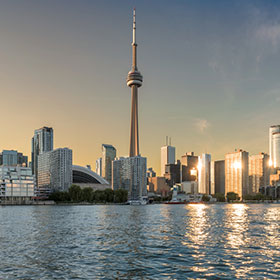
A Confederation of four provinces was later formed in 1867 by the three British North American colonies as well as the French colonies. By the Statute of Westminster of 1931, Canada continued to expand its number of provinces and territories while pursuing independence from the United Kingdom. By the Canada Act of 1982, Canada finally cut all links to the British parliament. As of right now, Canada is a constitutional monarchy and parliamentary democracy, with King Charles III of the United Kingdom serving as the formal head of state. During Canada vacations, it would be practically impossible to travel the entire length of the country in one trip. Picking one region that will emphasise the best aspects of that region and its provinces will make it easier to understand. In Canada, there are six major areas.
New Brunswick, Newfoundland and Labrador, Nova Scotia, and Prince Edward Island are included in the Atlantic Provinces. These areas are well-known for their beautiful Atlantic coast, indigenous Acadian culture, unspoiled nature, islands, and the old city of Halifax. Quebec, where French is the primary language, is the province in Canada with the most distinct culture. It also has a strong French influence. Montreal and Quebec City are well renowned for being Europeanized cities in Quebec. With Toronto, the largest Canadian metropolis, and Ottawa, the nation’s capital, Ontario is the most populous province in Canada. Niagara Falls is also located in Ontario. The Canadian provinces of Alberta, Manitoba, and Saskatchewan are part of the Prairies area. These provinces are renowned for their abundant natural resources, large open areas, and national parks, including the major cities.
The province of British Columbia takes great pride in the beauty of its public parks, mountains, lakes, fjords, beaches, chic cities like Vancouver, ski resorts like Whistler, and the charming capital city of Victoria. The Northwest Territories, Nunavut, and Yukon are included in the North. These regions are renowned for their windswept, freezing, arctic landscapes with distinctive flora and wildlife, native indigenous people with distinctive cultures, and remote communities.
Ontario Cities
While the average adventurer may be excited about the idea of seeing whales, bears, wolves, moose, and many other species, it may not be for everyone. Canada’s cities are among the most hospitable and diverse places on earth, and each one has its own distinct personality. They shouldn’t be disregarded. In addition to being the entry point to the enormous wildlife, undeveloped coastlines, and snow-capped mountains of British Columbia, Vancouver also has a tremendous creative side that is evident all across the city. Visit Ontario or Quebec, two of Canada’s cultural hotspots. The capital Ottawa and Ontario’s largest metropolis, Toronto, as well as Quebec’s French-influenced cities of Montreal and Quebec metropolis, are all well worth a visit.
Beautiful Nature
You won’t have to travel far if you’re in Canada for a city break but still want to enjoy the beautiful environment while you’re there. Vancouver is bordered by sea on three sides, and the North Shore Mountains are close by. Visit Calgary and even think about taking the Rocky Mountaineer, Canada’s renowned rail journey that ascends from Calgary to Banff National Park, Lake Louise, and Jasper National Park, if you want to see the magnificent Rocky Mountains. Toronto looks out over the enormous and magnificent Ontario Lake, is close to Niagara Falls, and both Montreal and Quebec City are located along the St. Lawrence River. Nova is the place to go if you want a calm, remote area.
Places to visit in Canada
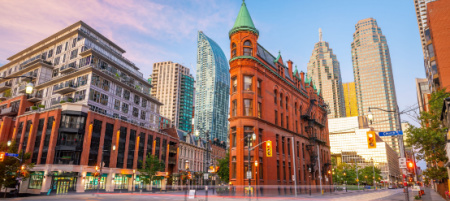
Toronto
TORONTO
The largest metropolitan area in Canada and the capital of the province of Ontario is Toronto. The centre of the economy, media, arts, fashion, education, finance, food, hospitality, technology, and tourism is located in this multicultural and cosmopolitan metropolis. Toronto is a dazzling metropolis with skyscrapers, public parks, waterfronts, world-class museums, entertainment, and nightlife areas, as well as a variety of Michelin-rated restaurants, cafes, pubs, and bars. It is frequently listed among the top 10 most livable cities in the world. Full-day tours to the magnificent Niagara Falls, which are located on the international boundary between Canada and the United States, can be taken from Toronto.
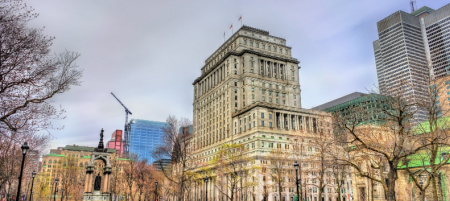
Montreal
CANADA
The second-most populated city in Canada, Montreal is a key economic and cultural powerhouse for the province of Quebec. The most Europeanized city in Canada, Montreal is a trendy and elegant metropolis with a French-influenced culture, 18th-century architecture, historic structures, and a rich cultural legacy. Festivals and culture abound in Montreal. Artists, musicians, writers, comedians, actresses, and other performers are drawn to this city. The city is also a culinary haven, where the finest European specialties meld with delicious North American fare to produce a delectable spread of foods and beverages.
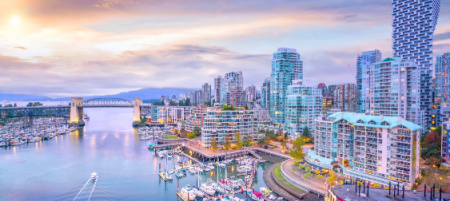
Vancouver
CANADA
Vancouver, which is located on Canada’s west coast, is the biggest city in the province of British Columbia. Modern skyscrapers, lovely and spacious public areas, gardens, beaches, and charming villages are all present in this magnificent metropolis. In addition to rich and delectable cuisine, a vibrant nightlife, entertainment, hiking and bike paths, and several day trips to Whistler, a well-liked ski resort, Vancouver is a city that cherishes nature. There are several attractions inside the city, such as top-notch interactive museums, breathtaking beaches, botanical gardens, restaurants, nightlife, entertainment, and shopping areas.
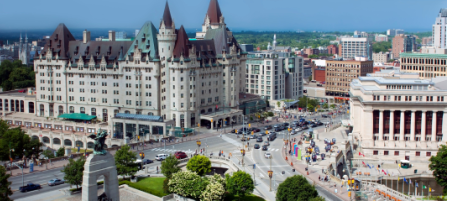
Ottawa
CANADA
Ottawa, the nation’s capital, is a stunning city located in the province of Ontario. There are several national, historic, and cultural sites in Ottawa, which is located on the bank of the Ottawa River. In addition, Ottawa is a city that often hosts festivals and celebrations. Just in front of the spectacular Gothic Parliament House, the Rideau Canal runs through the centre of Ottawa. In the winter, the canal freezes over and turns into the largest ice skating rink in the world. The magnificent Notre Dame Cathedral, a number of significant museums, botanical gardens, events, and festivals are just a few of Ottawa’s attractions.
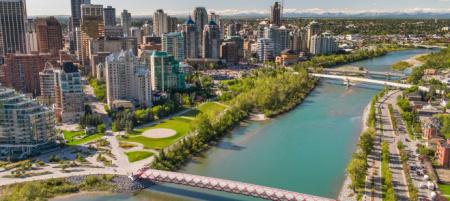
Calgary
CANADA
Calgary is a charming and important city in the province of Alberta. It is located on the banks of the Bow and Elbow Rivers. The city looks beautiful as it lies at the junction of the Great Prairies Plains and the foothills of the Canadian Rockies. Calgary is the economic, cultural, and tourism hub of Alberta and the Prairies. It is also famous for the annual event of Calgary Stampede which is also known as “the greatest outdoor show on earth”. Calgary is the hub to see the stunning destinations of Banff, Jasper, and Lake Louise. Calgary also hosts several amazing festivals.
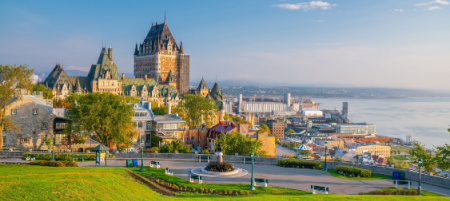
Quebec City
CANADA
One of the oldest cities in North America, Quebec City traces its origin to 1608 on the banks of the Saint Lawrence River. Quebec City is the official capital of Quebec province and before the formation of the Canadian federation, it used to be the capital of New France. Quebec City’s Old Town is a UNESCO World Heritage Site which still retains the old-world vibe due to its typical European-style architecture and cobbled streets. Quebec City’s Old Town also has plenty of charming boutique hotels, bistros, restaurants, and cafes. Enjoy a cruise on the Saint Lawrence River, a horse-carriage ride, and a hot-air balloon ride.
When to visit Canada
In general, people associate Canada with long, icy winters and cool, pleasant summers. However, due to its size, Canada has a wide range of weather conditions. If you want to travel to Canada with fewer tourists, pay less for hotels and flights, and experience the country’s stunning autumn foliage, the best time to do so is from September to November. The summer months from June through August are the busiest for making travel plans in Canada. The peak travel season is from June to August. The summers in Canada feature bright days, a lack of snow, and lengthy daylight hours. The nation’s tourist infrastructure and attractions are operating at full capacity. Winter resorts grow in popularity as adventure and hiking destinations. The drawback, however, is the increased cost, congested cities, fully booked hotels, higher flight prices and heavy tourist footfalls.
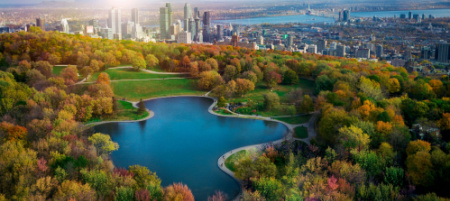
The shoulder seasons, from April to May and September to October, offer the best prices on lodging and travel. In the spring, the snow begins to melt, the temperature is still chilly, and the Rocky Mountains are still covered in snow. Before the busy summer travel seasons begin, the month of May finds temperatures rising and is an excellent time to visit the nation. September through the first week of November are the autumnal months. Although there is no snow during this time, the temperature begins to fall, and the foliage begins to change to a variety of fall colours like red, rust, yellow, ochre, and gold. Some attractions close near the end of October, and hotel and flight costs are low. The winter, which begins in the second week of November and lasts until the end of March and the beginning of April, is the low season. In the eastern portions of the country, Canada’s winters are bitterly cold, harsh, snowy, and stormy. It becomes impassable up north because of the thick snow and bitter cold. But now is the ideal time of year to take advantage of ski resorts and winter activities. Hotels and airfares are considerably less expensive, there are fewer people around, and many attractions are still nearby.
Reasons to visit Canada
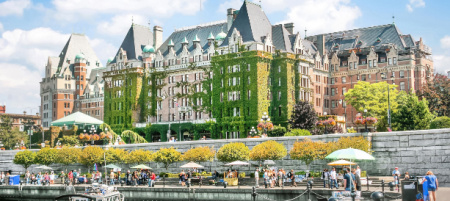
Amazing cities
CANADA
Numerous world-class, contemporary, and multicultural cities in Canada consistently rank in the top 20 on lists of the world’s best cities. Every Canadian city has a distinct character and offers fantastic sights, delectable food and drink, breathtaking scenery, a rich history and culture, and a tonne of things to do. With its gardens, beaches, and mountains, Vancouver is stunning. Toronto has an abundance of restaurants, entertainment, and nightlife. The centre of culture for musicians, writers, and performers is Montreal. The centre of the Prairies, Calgary, is renowned for its distinctive festivals.

Pristine landscapes
CANADA
Beautiful, picture-perfect natural vistas may be seen throughout Canada. Five magnificent national parks—Banff, Jasper, Glacier, Kootenay, and Yoho—can be found in the Canadian Rockies. Green flora, snow-capped mountains, glaciers, and lakes that are emerald green and turquoise blue are all features of these national parks. Visit Churchill, the bear capital of Canada, Lake Louise, and Whistler to enjoy the vast and unspoiled environment of the Northern Territories. The iconic Niagara Falls and Nova Scotia’s windswept, rugged, and craggy shoreline.
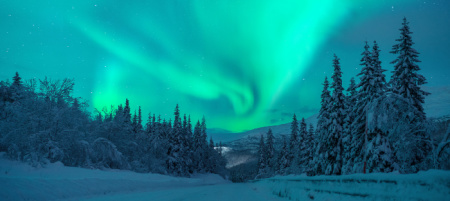
Unique natural wonders
CANADA
Canada is a sizable nation rich of extraordinary natural wonders and spectacles. The Aurora Borealis, also known as the Northern Lights, draws tourists to the Canadian cities of Whitehorse, Yellowknife, Churchill, Banff, and Jasper every year. In these cities, there is no light pollution, which makes the Northern Lights appear even more mysterious. Yukon’s Midnight Sun is a rare phenomenon when the sun shines well after sunset. Giant icebergs that have detached from the Greenland glacier drift in Iceberg Alley off the coast of Newfoundland and Labrador.
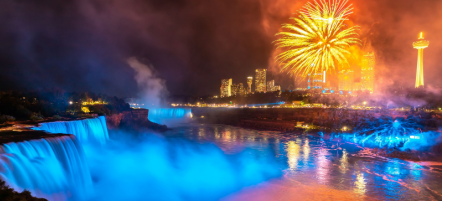
Events and festivals
CANADA
Amazing festivals and events take place all year round in Canada’s many cities. Travellers and locals can interact, have a good time, enjoy delectable food, learn about indigenous culture, participate in music, dance, games, and revelry, shop for souvenirs and artisanal handcrafts, and have a good time at Canadian festivals and events. The Calgary Stampede, one of the best outdoor spectacles, Vancouver’s Celebration of Light, Edmonton’s Folk Music Festival, Toronto’s International Film Festival, and Quebec City’s Winter Carnival are just a few of Canada’s well-known festivals and events.
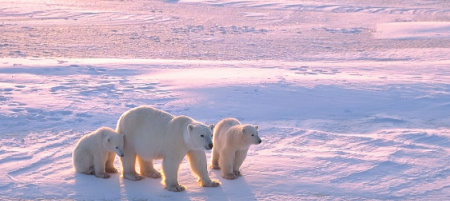
Wilderness and wildlife
CANADA
The immense wildness and untamed landscape of Canada make it a sanctuary for nature enthusiasts who want to see animals in its natural setting. Numerous bears live in the nation; they prowl the forests and ply the lakes and rivers in search of salmon. Polar bears are found in Churchill, Manitoba, whereas Grizzly and black bears live in British Columbia. More than 30 different species of whales live in the chilly waters of the Atlantic and Pacific, including humpback whales, orcas, beluga whales, killer whales, and blue whales, which can be seen in places like Churchill, Nunavut, and the St. Lawrence River.

Food and drinks
CANADA
Many restaurants, bars, cafes, and fast-food outlets in Canadian cities mix the best culinary aspects of Canadian cuisine with those of Asian, European, Latin American, and American cuisines. The ethnic and cosmopolitan nature of Canadian towns has inspired immigrants from throughout the world to open their own restaurants and serve their native cuisines. Poutine, Tourtiere, Butter Tarts, Maple Syrup Pancakes, Ice Wine and Ice Beers, Montreal Smoked Meat, Canadian Peameal Bacon, and Flipper Pie are a few of the must-try Canadian delicacies.
Frequently Asked Questions on Canada Holidays
The three main international airports in Canada are the main entry points for the nation. The IATA codes for these airports are YYZ for Toronto Pearson International Airport, YVR for Vancouver International Airport, and YUL for Montreal-Trudeau International Airport. Two national airlines are WestJet and Air Canada. Train services are available from Seattle to Vancouver and from New York to Toronto through Amtrack and VIA Rail Canada. Bus services are provided by Greyhound between Seattle and Vancouver, New York and Toronto, Boston, and Montreal.
Visas are not required for entry into the country, and visitors from the United Kingdom, Australia, New Zealand, and the European Union may stay there for up to six months on a tourist visa. If entering the nation by air, they must get an Electronic Travel Authorization (eTA). United States citizens are not need to have a visa in order to enter the nation, but they must bring their passports or other forms of identification.
The official currency is the Canadian Dollar (CAD). The exchange rates for the Canadian dollar are now approximately 1 CAD for 1 USD, 1 CAD for 1 GBP, and 1 CAD for 1 EUR. Depending on the currency, exchange rates might fluctuate by a factor of 1 to 2. In the city, there are several companies offering currency exchange services. Additionally generally recognised in the nation are VISA and Mastercard.
Yes, international travel insurance is necessary to travel to Canada. This insurance must provide coverage for medical expenses, accidental damage or injury, baggage loss, loss of life or personal effects, and trip cancellation and delay.
Canada has two official languages: French and English. Speaking English is very common in the nation. Quebec is a province that speaks a lot of French.
Given the size of Canada, there are great distances between its cities and provinces. Taking flights to different cities is the simplest and most practical option. The well-known airlines are Air Canada, WestJet, Flair Airlines, Swoop, and Air Transat. Between the major Canadian cities, VIA Rail Canada operates a number of long-distance trains. A very well-liked tourist train that travels through the Canadian Rockies departs from Vancouver. Bus transportation between Canadian cities and provinces is also offered by a number of coach companies. Even seasoned visitors find long-distance driving challenging. Self-driving cars are also available.
